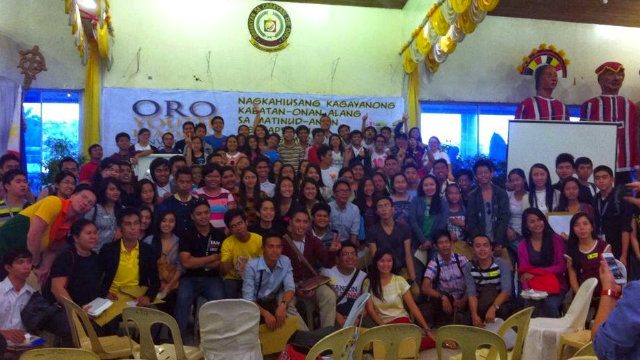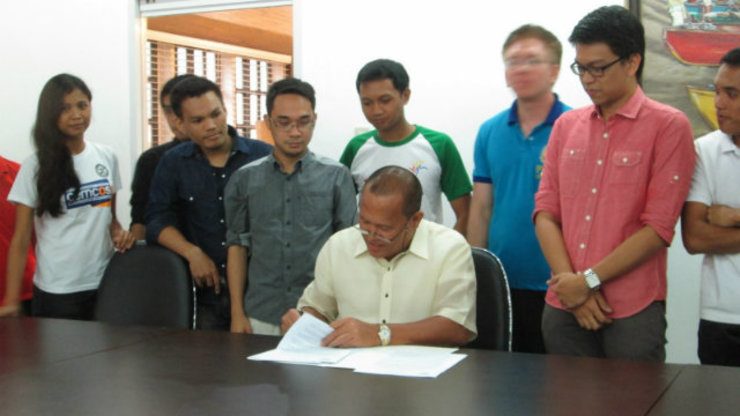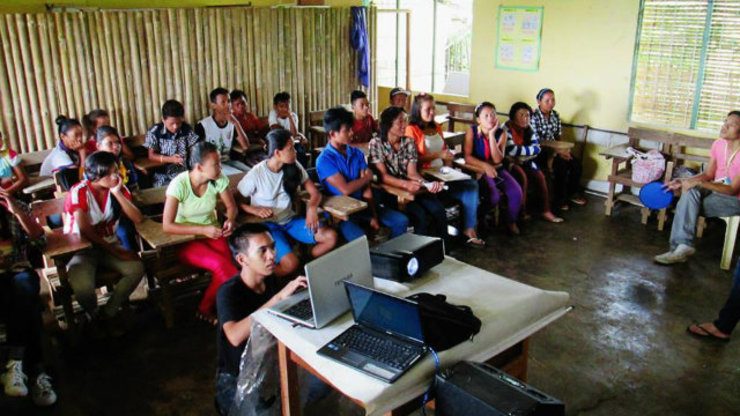SUMMARY
This is AI generated summarization, which may have errors. For context, always refer to the full article.

In our social formation class, we were repeatedly taught that public governance is a shared responsibility. It is not only the work of people in office but also a duty of all citizens.
The quality of life of a society is inextricably linked to the quality of public governance. Thus, it’s everyone’s business to improve our public institutions.
Moved by the desire to do my fair share, I found myself volunteering in a coalition called the Kagayanon for Good Governance – Youth (KGG) in December of 2012.
It was a band of youth advocates who conduced voters’ education seminars and youth consultations in different barangays in preparation for the 2013-midterm elections. Its aim was not to only educate young voters but to craft a Local Youth Agenda. (Read: Filipino youth: Safeguard your ‘patrimoney’)
In the course of our weekly advocacy work, it made me see how passionate Filipinos are about elections. We pour intense emotions in politics especially when we associate ourselves deeply with our manok or political bet. It was indeed a noisy contest of passions.
But here lies our fault.
Our deafening noise before election day is equally matched by the deafening silence of our disengagement after election season. After we exhaust ourselves campaigning for a candidate, we go back to our private lives.
For the youth, we scroll our newsfeeds and stand satisfied that we rant our complaints about government in our statuses and nestle in our concept of activism by simply sharing the link of an advocacy page.
The youth is leaving the affairs of governance to the grown-ups and, maybe out of convenience, redefining activism as solely a virtual affair.
Socially innovating youth empowerment
In response to this need to make governance a more tangible, personal and interesting concept for the youth, KGG proposed to the newly elected Mayor Oscar S. Moreno the creation a youth council as the center-piece of the local youth agenda.
The idea was to allow a broader youth-base to participate in governance and in the process account the local leadership on their promises during elections.It is a proactive form of political engagement where we are given the opportunity to directly engage political power based on a youth agenda we ourselves articulate and at the same time amplify our individual advocacies at a citywide level.
The proposed council is composed of 17 youth representatives from 7 sectors, namely: in-school, out of school, youth with special needs, community-based, faith-based, and indigenous and moro youth.
With intense lobbying and a covenant signing with the new mayor before he took his oath, we finally came into formal arrangements with the City Social Welfare and Development Office and the National Youth Commission to organize the Oro Youth Leaders Convergence on March 22, 2014.

I managed to win a seat as part of the community-based sector and eventually won the chairmanship as interim chairperson. Following our election, city hall empowered us to craft the executive order ourselves constituting the youth council. This included defining our roles, duties and structure. It was a bottom-up approach of a different kind.
On May 18, 2014, the Mayor affixed his signature on Executive Order 072-14 and thus constituting the CDO Youth Development Council (OYDC) with the City Social Welfare and Development Office as our secretariat.
The unique feature of the OYDC is the institution of youth representatives in various local bodies of the city. I sit as youth representative in the Local School Board while my colleagues also sit on other city bodies such as the Disaster Risk Reduction and Management Council, among others.
This does not only give the youth actual participation in crafting policies but it is also a door for the youth to learn and appreciate governance first hand in a broad range of concerns.

Youth public-private partnerships
Presently, the out-of-school youth and youth-with-special needs have been profiling and linking youth with disabilities and out-of-school youth to free skills development trainings. Our faith-based sector is also mentoring beneficiaries of the city scholarship program.
We have started to amplify our environment and disaster preparedness advocacies through citywide forums and barangay level education campaigns.
The community-based youth has been organizing and capacitating many barangay-based youth organizations including Moro and Indigenous youth to articulate their own barangay youth development agenda.
The In-school youth sector are also profiling establishments near schools in order to report the findings to the Regulatory and Complaints Board of the City among other engagements.

Alternative model
The OYDC has a long way to go. In its infancy, it has somehow laid the impression that the youth, if given the formal opportunity to participate, can concretely contribute to the strengthening of our public institutions.
The unfolding story of the OYDC hopes to serve as an alternative model for youth empowerment where existing organized youth groups, which are more cohesive, grounded and neutral, are given the tools to widen their advocacy and given a seat at the table of policy-making. In the long run, we hope that this can spur a culture of engaged citizenship among the young and a sense of communal ownership of the solutions as well as the challenges of the community.
This is our attempt to make our public institutions more inclusive by giving a youth leader from a far-flung barangay an equal chance as a student leader from a university to sit at the table of policy-making.
This is our attempt to make real the constitutional declaration that the youth is vital in nation-building.
Let us all start with our local government unit – the closest to the people. – Rappler.com
Want to learn more about the CDO Youth Development Council? You can contact them via email: oroyouthcon@gmail.com or through their Facebook page. They also have a blog: oroyouthcouncil.blogspot.com
Ernesto B. Neri is a 4th year Law Student of Xavier University – Ateneo de Cagayan and presently sits as the Chairperson of the Oro Youth Development Council. He also sits as the Youth Representative in the Local School Board of Cagayan de Oro City. He is a resident intern of Xavier University Center for Legal Assistance and President of the Law Student Council. He also loves biking and eating gingerbread cookies.
iSpeak is Rappler’s platform for sharing ideas, sparking discussions, and taking action! Share your iSpeak articles with us: move.ph@rappler.com.
Tell us what you think about this article in the comments section below.
Add a comment
How does this make you feel?
There are no comments yet. Add your comment to start the conversation.